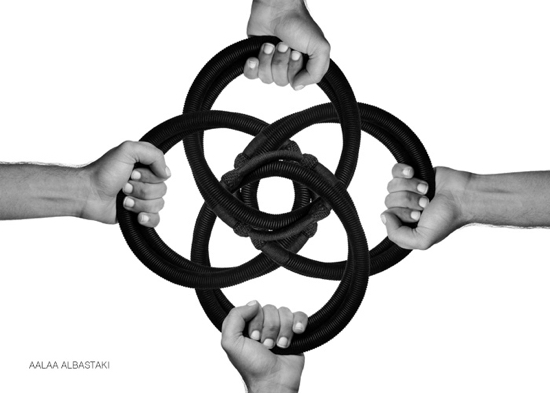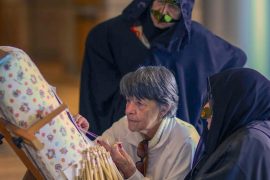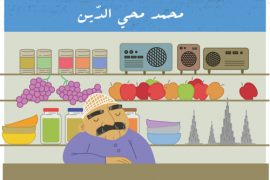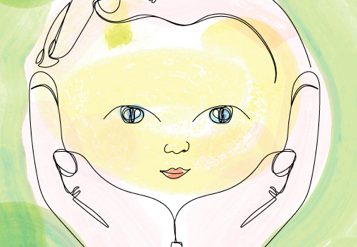Article Brief: Author visits an Ugalor, Arabian male headpiece maker, and explores the contemporary process of making it, as well as its past functions.

In the heart of Sharjah, a new extension of the old souk is currently in the process of being erected upon aged foundations that have been unearthed, and put to use once more. The new space flows smoothly into the old souk shops, which is occupied by stores that sell a variety of goods, most of which ring familiar bells to the UAE community who grew up in the area during the 80s and 90s such traditional confectionary, old patterns and garments, old fashioned trinkets, just plainly and pleasantly, old fashioned and dated goods. In one of these modest stores sits a group of three to four men, each of them focused diligently on a certain task. Fighting for their share of the space in that store is a group of machines, meant to be handled manually. The upper shelves patiently hold countless stacks of packaged Arabian male headpieces, known in Arabic as Ugal, ready to be picked up by their new owners.
The history of the Ugal dates back to the times when the Arabs were coping with their nomadic lifestyle in the desert. The men would place a fabric on their heads to protect them from the relentless blazing sun, and in an effort to keep the fabric intact on their heads and avoid slippage, the circular headpiece came into use. It is also believed that the headpiece was a tool used to pry camels to move forward, and once the herder or the camel owner had no use for it, he would tie it around his head. Nowadays, it is a cultural representation worn predominantly by men in the Arabian Gulf region.
Mohammed, the Ugal shop owner, pointed out that an order of one headpiece would entail a process of 30 to 45 minutes to yield a finished and packaged product. The process is consistent of twisting cotton strings tightly together using a machine, to create an underlying base of circular threads tightened closely together. Then black strings, made of cotton, silk, or goat hair, are tied around the base. The piece is then rounded and sealed into a circle. The final step is running the piece through a flame to burn off excess fibers sticking out of place.
Comparing the functionality and purpose of the Ugal from then to now shows that while the Ugal might not hold the same functions, it continues to retain the same weight of the preservation of culture, and is persistent in holding on to its uses, however different from the past. Just like the new souk has done by rebuilding over its original base.




1 Comment